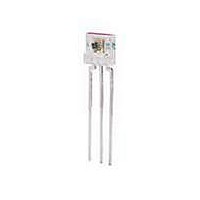TRS1766 TAOS, TRS1766 Datasheet - Page 3

TRS1766
Manufacturer Part Number
TRS1766
Description
Photodiodes Blue reflective sensor
Manufacturer
TAOS
Type
High Sensitivity Reflective Color Sensorr
Datasheet
1.TRS1755.pdf
(10 pages)
Specifications of TRS1766
Package / Case
SMT
Maximum Operating Temperature
+ 70 C
Minimum Operating Temperature
0 C
Mounting Style
SMD/SMT
Lead Free Status / RoHS Status
Lead free / RoHS Compliant
Available stocks
Company
Part Number
Manufacturer
Quantity
Price
Part Number:
TRS1766
Manufacturer:
TAOSINC
Quantity:
20 000
Electrical Characteristics at V
Detector (see Notes 2 and 3)
NOTES: 2. Measured with R
The LUMENOLOGY r Company
V
V
V
R
R
R
R
PSRR
I
DD
VD
D
OM
e
V
10. Power supply rejection ratio PSRR is defined as 20 log ( V
Dark voltage
Maximum output voltage
Maximum out ut voltage
swing
Temperature coefficient
of dark voltage (V
Irradiance responsivity
Irradiance responsivity
Illuminance responsivity
Illuminance responsivity
Power supply rejection
ratio
Supply current
3. Optical measurements are made using small-angle incident radiation from a light-emitting diode (LED) optical source.
4. The input irradiance is supplied by an InGaN light-emitting diode with the following characteristics: peak wavelength
5. The input irradiance is supplied by an InGaN light-emitting diode with the following characteristics: peak wavelength
6. The input irradiance is supplied by an AlInGaP light-emitting diode with the following characteristics: peak wavelength
7. Responsivity is characterized over the range V
8. The input irradiance is supplied by a GaP light-emitting diode with the following characteristics: peak wavelength
9. Illuminance responsivity R
PARAMETER
PARAMETER
spectral halfwidth
spectral halfwidth
spectral halfwidth
E
spectral halfwidth
4, 5, 6, and 8, and using 1 lx = 1 lm/m
e
over this range will typically have a positive extrapolated V
y
j
D
)
L
= 10 k
½ = 35 nm, luminous efficacy = 75 lm/W.
½ = 47 nm, luminous efficacy = 520 lm/W.
½ = 17 nm, luminous efficacy = 150 lm/W.
½ = 28 nm, luminous efficacy = 595 lm/W.
E
No Load
R
T
see Notes 4 and 7
see Notes 5 and 7
see Notes 7 and 8
see Notes 6 and 7
see Notes 4 and 7
see Notes 5 and 7
see Notes 7 and 8
see Notes 6 and 7
f
f
V
ac
ac
A
p
p
p
p
p
p
p
p
e
L
O
V
TEST CONDITIONS
TEST CONDITIONS
= 470 nm,
= 524 nm,
=565 nm,
= 635 nm,
= 470 nm,
= 524 nm,
= 565 nm,
= 635 nm,
= 0
= 0 C to 70 C
= 10 k
= 100 Hz, see Note 10
= 1 kHz, see Note 10
= 2 V (typical)
between output and ground.
is calculated from the irradiance responsivity by using the LED luminous efficacy values stated in Notes
DD
= 5 V, T
t
2
.
A
www.taosinc.com
= 25 C, R
O
= 0.1 V to 4.5 V. The best-fit straight line of Output Voltage V
MIN
0
4
TRS1722
L
0.027
DD
TYP MAX
4.49
0.12
0.06
1.21
–15
460
= 10 k
O
4.2
1.9
(f)/ V
20
35
90
55
35
value for E
O
(f)) with V
3.5
20
(unless otherwise noted) (continued)
e
MIN
= 0.
0
4
DD
TRS1755
t
(f = 0) = 5 V and V
0.093
TYP MAX
4.49
0.47
0.24
0.20
–15
300
300
4.2
1.9
90
35
55
35
3.5
20
MIN
O
TAOS034 – NOVEMBER 2002
0
4
(f = 0) = 2 V.
Copyright E 2002, TAOS Inc.
TRS1766
0.015
0.033
TYP MAX
4.49
1.57
0.10
–15
300
130
4.2
1.9
O
22
13
55
35
versus Irradiance
3.5
p
20
p
p
p
= 565 nm,
= 470 nm,
= 524 nm,
= 635 nm,
UNIT
UNIT
( W/
( W/
cm
mV/
V/Ix
V/Ix
mV
V/ C
mA
dB
dB
V
V
2
)
3




















